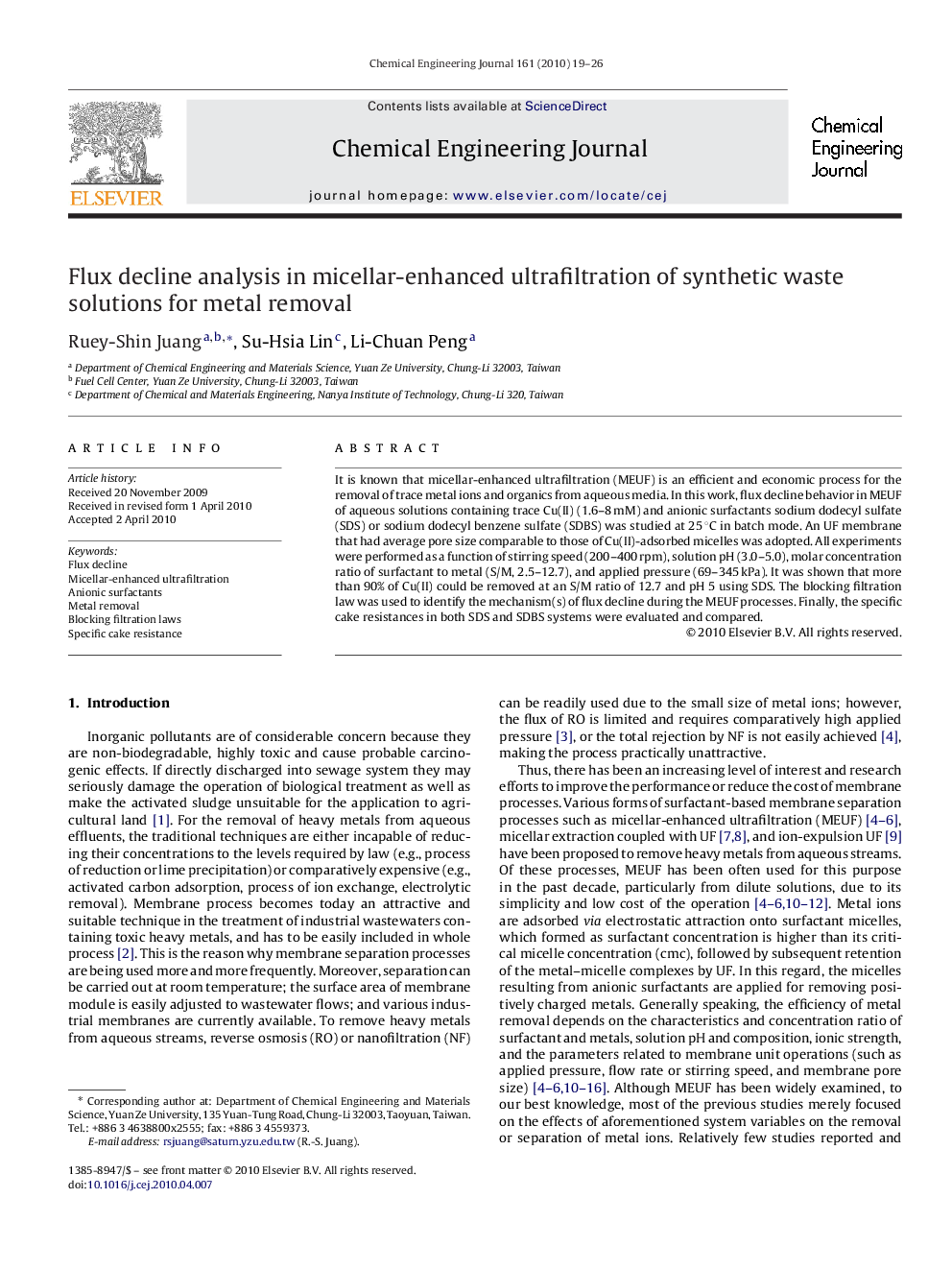| Article ID | Journal | Published Year | Pages | File Type |
|---|---|---|---|---|
| 151562 | Chemical Engineering Journal | 2010 | 8 Pages |
It is known that micellar-enhanced ultrafiltration (MEUF) is an efficient and economic process for the removal of trace metal ions and organics from aqueous media. In this work, flux decline behavior in MEUF of aqueous solutions containing trace Cu(II) (1.6–8 mM) and anionic surfactants sodium dodecyl sulfate (SDS) or sodium dodecyl benzene sulfate (SDBS) was studied at 25 °C in batch mode. An UF membrane that had average pore size comparable to those of Cu(II)-adsorbed micelles was adopted. All experiments were performed as a function of stirring speed (200–400 rpm), solution pH (3.0–5.0), molar concentration ratio of surfactant to metal (S/M, 2.5–12.7), and applied pressure (69–345 kPa). It was shown that more than 90% of Cu(II) could be removed at an S/M ratio of 12.7 and pH 5 using SDS. The blocking filtration law was used to identify the mechanism(s) of flux decline during the MEUF processes. Finally, the specific cake resistances in both SDS and SDBS systems were evaluated and compared.
